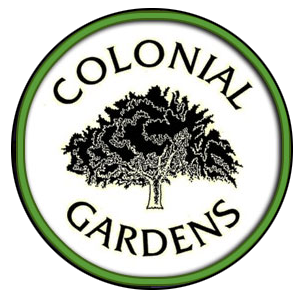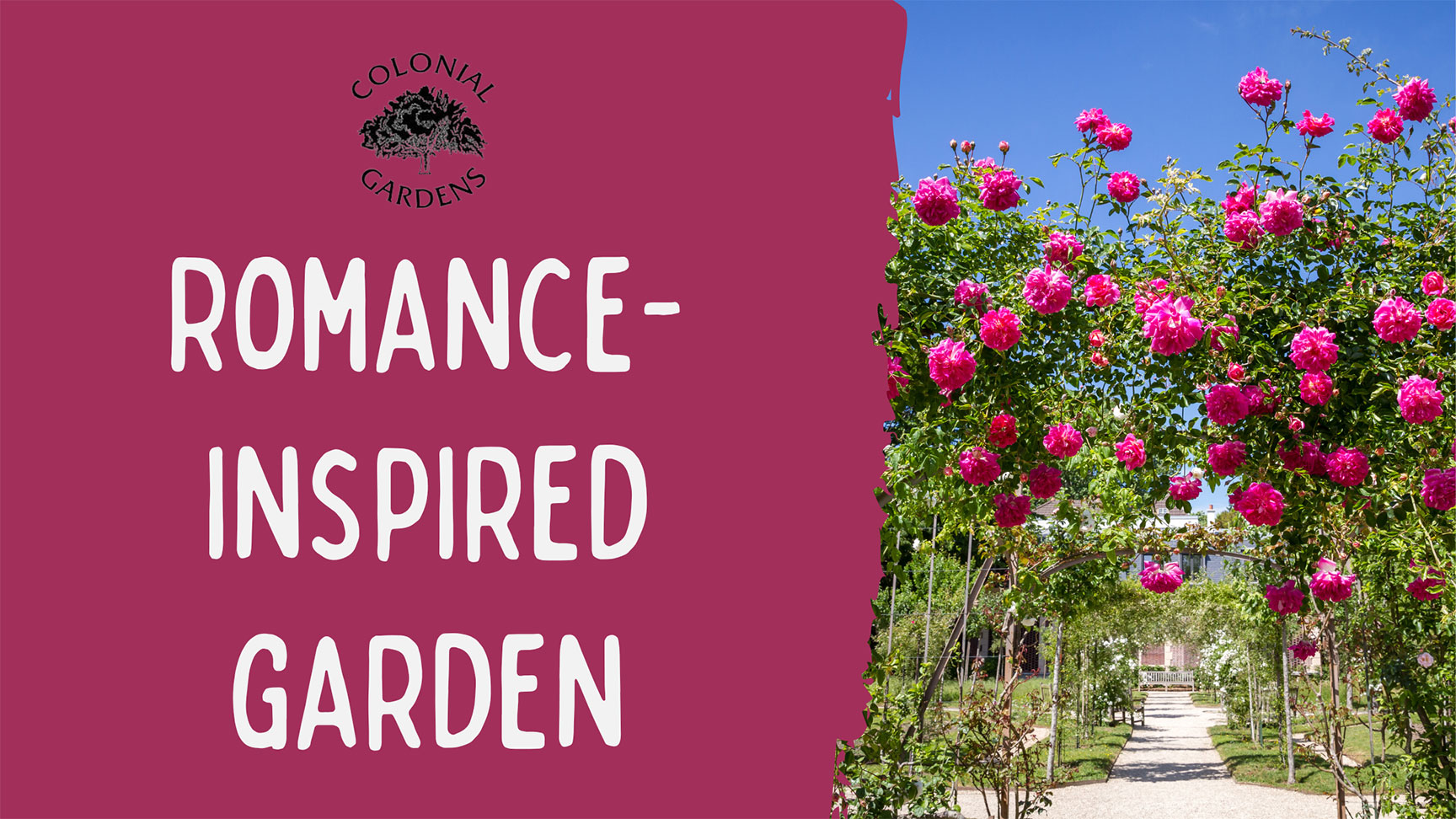
A Romance Inspired Garden:
The setting: a lovely garden, paths meandering through delicate flowers with floral scents filling the air. The main characters: You and the dreamboat of your choice. This garden is inspired by romance and is designed to transport you to a destination you’ve dreamed up to live out your fantasy.
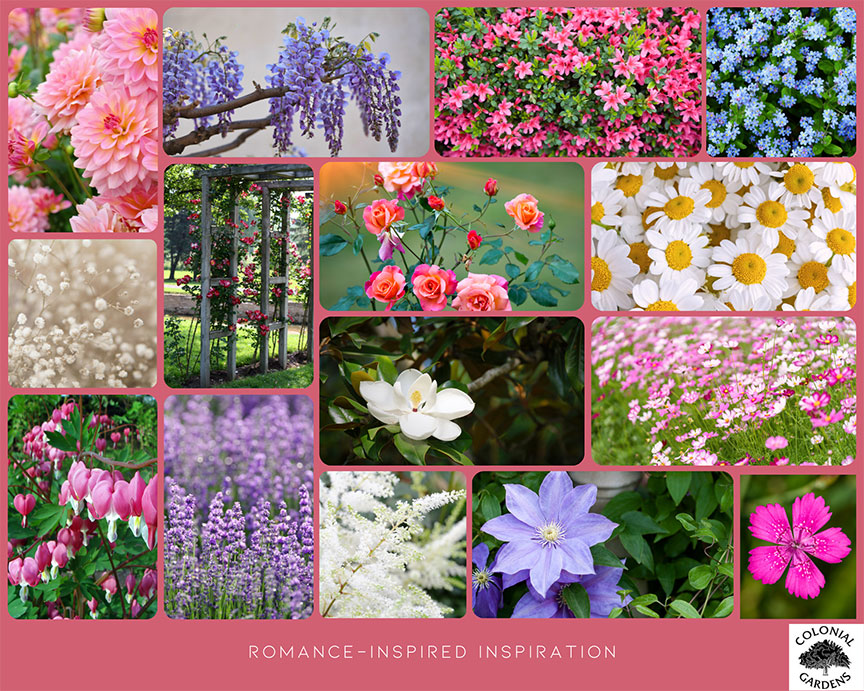
Key Elements:
Feminine Color Scheme, Floral Heavy: While a lot of the inspiration for this garden relies on nostalgia and classic romance tales, our modern perception of romantic flowers are somewhat tied to those found in fresh floral arrangements. You’ll want to plan their garden to feature blooms throughout the growing season so select options for spring, summer, and fall. Choose some vining varieties so that you have blooms somewhere over your head. Leave the intensity to the chemistry between the two leads! Lean into the soft hues of pinks, purples, and whites. These colors will always complement each other, giving a soft harmony to the garden that flows from one space to another.
Privacy: While many of these elements can be incorporated into a vista, part of the romance is the seclusion. There’s magic in the mystery of wondering what might be around a corner and finding something beautiful and special there. Incorporate winding paths, secret hideaways under arbors. Include pockets to put a bench (for two!) to sit amongst the flowers and forget the rest of the world.
Engage the Senses: What is one of the most important senses when forming memories? Scent. We’re including some flowers in the blog that bring a pleasant scent to the garden. This natural perfume will transport you to another space.
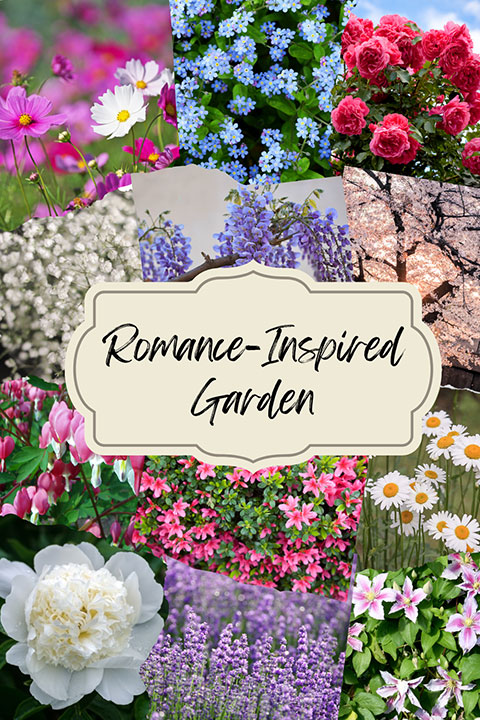
Plant Ideas:
Rose: Let’s get the big one out of the way first: there is no flower more associated with romance than the rose. Thank Shakespeare or the fresh-flower industry, but roses are a staple of romance. You can select a color based on its meaning, red meaning true love. Climbing roses can grow up an arbor or trellis to create a private spot or beautiful arch.
How to Grow: Roses like sunny conditions with well-drained soil. There are many types of roses to choose from. If you are a beginner gardener, we recommend the easiest, disease-resistant varieties like Miracle on the Hudson or Tru-Bloom roses. If you are a more experienced gardener, or feeling ambitious, an English rose like a David Austin will give you the largest blooms with the best scents.
Bleeding Hearts: With classic arching branches with dangling hearts, no plant visually evokes romance than the bleeding hearts.
How to Grow: This spring bloomer likes shady conditions, where the heart-shaped blooms will pop. While it is perennial, you can expect this plant to go dormant in the heat of summer. Make sure you pair it in a location with other shade-tolerant species that show color in other times of year.
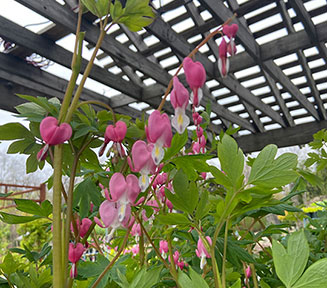
Wisteria: This vine features drooping clusters of purple-blue flowers. We recommend planting a native variety, such as Amethyst Falls, which is non-invasive and easy to maintain.
How to Grow: Wisteria requires a strong support system to climb, such as a wrought-iron arbor. If they are happy, you’ll have this woody vine for many years to enjoy.
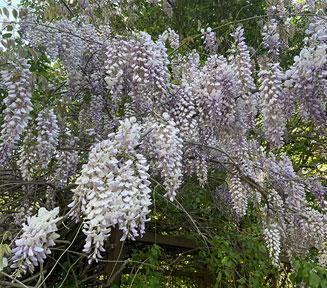
Clematis: This vine becomes blanketed in uniquely beautiful flowers in the early summer. Some varieties will stay small enough for your mailbox, while others may climb over an arch or trellis.
How to Grow: There are several different types of Clematis, but the most common varieties are climbing vines that require some sort of support. Clematis do not tolerate their roots getting too hot, so they are best suited for part-shade conditions with other plants shading their base.
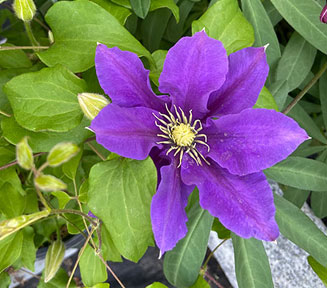
Lavender: Lavender is the ultimate relaxation herb. The long-blooming stalks can sway in the wind.
How to Grow: Lavender needs a full sun location with well-drained soil. The most common reason we see lavender fail is being planted in a location with soil that stays too wet. Plan for an area with at least 8 hours of full sun and great drainage for the best result. Any variety of English lavender will be hardy in our area. If you choose Spanish lavender, which has a slightly different bloom and look, just plan to replace it after a cold winter.
Peony: Peonies are world-renowned for their huge, fragrant blooms. They bloom just around Mother’s Day to give you massive color.
How to Grow: Find a sunny spot with good drainage with plenty of space for this perennial to shine. You’ll be blessed with huge, gorgeous blooms. Consider purchasing a peony cage or other support structure to prevent drooping.
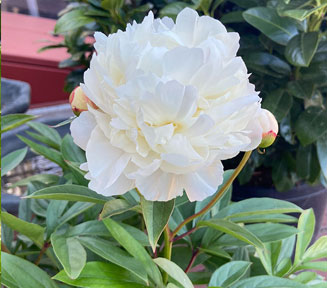
Lilacs: Lilacs are famous for their scented flowers that bloom in the spring, New varieties are bred for disease resistance and may include other traits like being more compact, reblooming, or particularly scented.
How to Grow: Find a spot with at least 6 hours of sunlight and good drainage. If you need to prune them, do so directly after blooming.
Redbuds: Redbuds are a wonderful native tree with unique spring blooms that sprout along the branches. Although these flowers are beautiful, this tree makes the list because of its foliage. Redbuds have gorgeous heart-shaped leaves. Modern plant breeding has given us options such as Merlot, a weeping variety with dark purple leaves, and Carolina Sweetheart, an upright variety with variegated leaves. Carolina Sweetheart is probably our top pick, but you can’t go wrong with any variety of redbud that makes your heart sing.
How to Grow: Redbuds are versatile trees that can handle full sun to part-shade conditions. Check the specific variety to make sure you give your tree enough space.
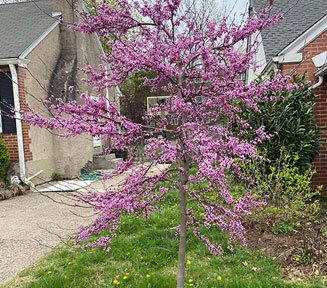
Forget-Me-Nots: Sometimes it’s all about the meaning behind the flower. This shade-loving perennial blooms with tiny sprigs of pink or blue flowers. These flowers have been used as a token of
How to Grow: Pick a shady spot with good drainage and place towards the front of the bed, where they will be noticed. Pair with perennials that will stunning in different seasons, like astilbe or aruncus, so that the area maintains its interest after the forget-me-nots have finished blooming.
Hybrid ‘Little Girl’ Magnolia Trees: This series of hybrid magnolias sports pinkish flowers in the spring before its leaves come in. ‘Anne’, ‘Betty’, and ‘Jane’ are all bred to bloom later to lessen the risk of frost damaging their buds.
How to Grow: Choose a sunny spot in your yard with good drainage where this beauty can shine. Mulch around the base to help reduce weeds and retain water.
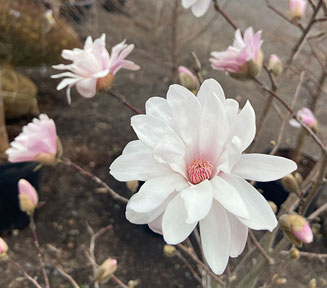
Azaleas: Azaleas are an old-fashioned favorite because of their incredible spring show of dense blooms.
How to Grow: In our area, azaleas prefer morning sun with shade in the afternoon. This combination of light will give you the best blooms while avoiding crispier leaves.
Shasta Daisies: This classic white daisy is a superstar: deer-resistant, long-blooming, and hardy. The white color is a great palette cleanser between the pinks and purples and gives a sense of innocence to the garden.
How to Grow: Find a spot in your garden with at least 6 hours of sun and good drainage. Shasta daisies will quickly colonize an area so pair them with equally aggressive plants to contain them or place them in a bed where they can be the star.
Baby’s Breath: Gypsophila, or baby’s breath, is best known for its use in floral arrangements. While it’s often used as a filler and compliment to focal flowers like roses, recent floral trends have included baby’s breath standing on its own. The airy structure of the baby’s breath gives it movement in the wind. If you’re not a fan of Baby’s Breath, but want similar airy puffs of blooms, consider Yarrow ‘Peter Cottontail.’
Everyone’s idea of romance is different! Create a space that makes you feel relaxed and secluded.
Other Options:
- Crape Myrtle
- Calla lilies
- Dahlias
- Foxglove
- Lily
- Carnations
- Lily of the Valley
- Iris
- Anemone
- Cosmos
- Magnolia
- Astilbe
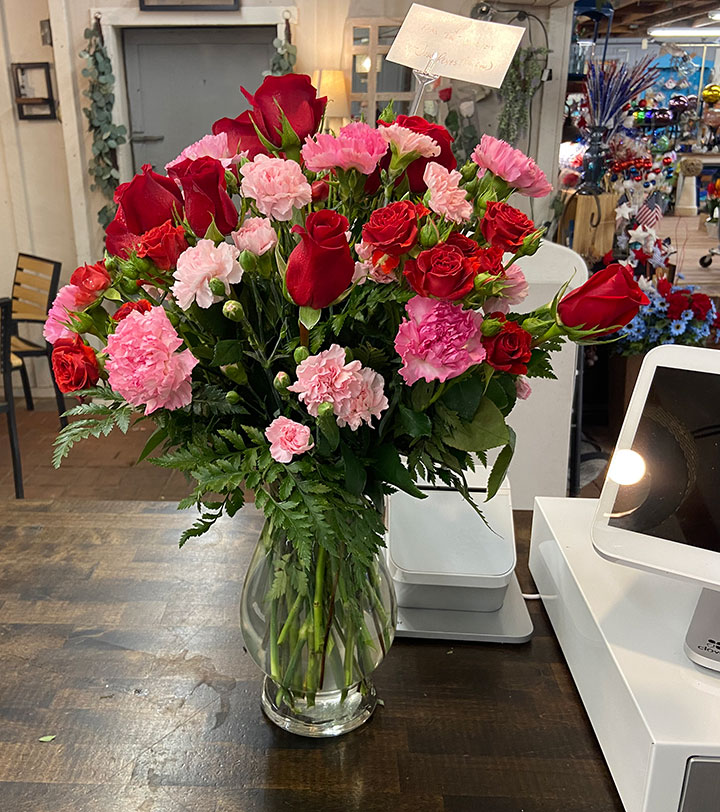
Want to further the romance? Colonial Gardens includes a full-service florist that offers arrangements for all occasions: shopcolonialgardenspa.com
Colonial Gardens is an independent garden center located in Phoenixville in Chester County, Pennsylvania since 1967. We carry one of the widest selection of annuals, perennials, trees and shrubs, and food gardening crops in Southeastern Pennsylvania. We offer professional landscaping services and a full-service florist. Visit our greenhouse for unique houseplants and our gift shop for gifts and garden accessories. In the fall and winter, join us for our family-friendly seasonal events and Christmas shop.
